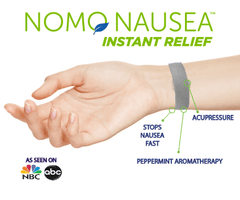
What does giving birth feel like?
You're about to celebrate your BIRTH-DAY! Get the real guide of what to expect when your expecting & the truth behind what does giving birth feel like? From what your birthing plan is to what actually happens. Do you know about the delivery process? You will after reading this. The Bradley method of delivery, precipitous labor, birthing ball, water birthing, a forceps delivery, and then what an urgent c-section looks like. And don't forget tips to help you get thru labor pains. If you don't have time to read it all the way thru, just listen to Pregnancy Podcast Pukeology Episode 39: Birthing Edition - What does giving birth feel like?
Birthing: The Process of Giving Birth
If you have already given birth, you can bear witness that it is not easy. If you are yet to, then you need to be adequately prepared and ready to face it. This article will provide you with tips on the various birthing plans and how you and your birth attendant can make things work out without any health complications. The most common side effect of labor and delivery is nausea and vomiting. Did you know over 80% of women will experience upset stomach for a variety of reason, but you don't have apart of that statistic with NoMo Nausea. NoMo Nausea Band is an essential oil infused pressure technology wristband that is clinically proven to stop you from throwing up in seconds.
Is nausea a sign or labor? Get relief for nausea before labor!


Why do I throw up during delivery?
Giving birth is what we in medicine call a vaso-vagal response, or you probably know it better as grunting as your sitting on the toilet. When you do this your face usually turns red because your shunting blood flow up towards your head, sometimes the veins in your neck pop out, your heart rate automatically decreases, and the parasympathetic system is activated which turns on nausea and vomiting. Did you know that 80% of pregnant women will throw up during delivery? If you want to learn all the reasons why someone gets labor sickness. Take a look at the answers to Why do I throw up during delivery?
Precipitous Labor
Most of the time, women describe labor pains as the worst pain that they have ever experienced. This is because normal labor pain can go for some time while increasing in frequency and intensity. During the first pregnancy, normal labor can take an average of 12-18 hours while in subsequent pregnancies, labor can go up to 6 hours. However, in precipitous labor, women experience labor for a shorter duration, less than 3 hours, resulting in the delivery of a baby.
You are likely to experience precipitous labor if you have a low maternal age, having prior deliveries, lower infant birth weight or have an underlying hypertensive condition such as preeclampsia. It is important to note that you can have all these factors and fail to have a rapid delivery, at the same time you can lack the above factors and still have a rapid delivery.

Some of the symptoms you may experience during precipitous delivery are; abrupt contraction that is very strong and close to one another which do not give a break between each one, a strong urge to push down and pain throughout the contraction.
You may think that rapid labor is the best because you give birth fast, it may come with difficulties and problems. And you have an increased chance you will poop on the table! Curious how common is pooping while giving birth during labor and delivery, find out.
Some of the problems you may experience with precipitous labor include increased risk of perineal and/or cervical and vaginal tear or laceration, increased chances of excessive bleeding, and increased risk of maternal or inborn infection if you give birth in an unsterilized condition.
Forceps Delivery
Most of the time, you may have a spontaneous onset of labor, which continues progressively until the birth canal is adequate to give way for the baby to pass. Occasionally, this may not be the case as the labor may be poorly progressive, or prolonged than normal, or the life of the baby threatened. At this point, your birth attendant might have to consider forceps delivery, which is an assisted delivery method. By applying traction force to the head of the baby while the mother is pushing.
Bradly method of delivery
This method teaches natural childbirth and views birth as a natural process. It provides systematic natural labor techniques in which the expectant woman and her trainer take an active role. For many women, it is a simple method of increasing self-awareness, teaching a woman how to deal with labor stress by tuning to her own body. It empowers mothers to trust their bodies using natural relaxation, breathing, exercise, education, and nutrition.
Water Birthing
 With the aim of easing and minimizing labor pains, your health provider will direct you on how to make use of water birth and for how long. It’s simply a birth pool filled with warm water. The first stage of labor is the recommended duration to use the birth pool. It will help you ease your labor pains, decrease the likelihood of needing anesthesia, and speed up your labor for a quick delivery. Babies are born with a dive reflex, so they swallow water and not inhale up to 6 months of age, so they won't drown.
With the aim of easing and minimizing labor pains, your health provider will direct you on how to make use of water birth and for how long. It’s simply a birth pool filled with warm water. The first stage of labor is the recommended duration to use the birth pool. It will help you ease your labor pains, decrease the likelihood of needing anesthesia, and speed up your labor for a quick delivery. Babies are born with a dive reflex, so they swallow water and not inhale up to 6 months of age, so they won't drown.
Cesarean Section and Trial of Labor after C. Section
Due to fear of labor pains, some women opt for the Cesarean section while normally, it is made for the women going through abnormal, non-progressive labor or no labor at all, which appears to threaten the life of the mother and the baby as well.
There is a difference between an urgent c-section and an emergent cesarean. An urgent c-section is implied in the name, we need to get the baby out but as of this very moment the mom and baby are not in danger. Sometimes your OBGYN will recommend a cesarean because you have been laboring too long, or the babies heartrate drops with every contraction and push, but I hate to tell you that mainly it’s because of shift change at the witching hour between 5-7pm and 5-7am. Once your water is broken you can safely labor for 24 hours, recording your temperature frequently for fear of infection. It is not safe after 24 because the risk of infection threatens your life and your precious child’s.
Emergent c-section is an emergency. It means we need to get this baby out stat, or right away, because it threatens both of their lives. The most common reasons for an emergent c. section is prolapsed umbilical cord (the cord drops thru the cervix and into the vagina before the baby does, maternal hemorrhage (the mother is bleeding out), placental abruption (the placenta peels away from the wall of the uterus), and uterine rupture (your uterus tears along a previous c-section scar. This is why most OBGYNs favor a scheduled c-section after you have already had one to avoid what I just discussed. If you are interested in learning your alternatives like a VBAC (vaginal birth after cesarean) listen to Pregnancy Pukeology Podcast Episode 21: What is a VBAC?
Listen to "What Is VBAC? VBAC vs Cesarean Pregnancy Pukeology Podcast Episode 21" on Spreaker.
Trial of labor after cesarean delivery is an attempt to deliver via vaginal delivery after a previous cesarean delivery. However, your doctor or midwife should ensure that you have access to a health facility that can offer cesarean delivery in case of unexpected complications.
Will Birthing Ball Help Induce Labor?
A birthing ball is essentially an exercise ball made up of an elastic and durable material. Same as those used in yoga workouts can be used before and during labor, and as well after birth. They are preferred for comfort, relieve back pain, decrease pelvic pressure, and sometimes might shorten labor. There is no scientific evidence that birthing balls induce labor.
Will Squatting Help Induce Labor?
Squatting is an up and down movement exercise that will help you strengthen your pelvis. Gentle squats during pregnancy have been known to help with the onset of labor. These movements help the baby acquire a better position in the mother’s womb and stimulate the dilation of the cervix. Always ensure that the movements are not too deep to cause injury.
Will Walking Help with Labor?
Walking is a natural form of exercise. Brisk walking is adequate to trigger and induce labor. Walking will exert pressure on your cervix, which can aid place the baby in a better position, hence fastening labor. It should be done at a comfortable pace. It does not mean really running on a treadmill. Just walking around your house is more beneficial.

How to manage labor pain naturally?
- Change positions
- Apply warmth
- Music Therapy
- Massage
- TENS unit
- Hypnosis
- Relaxation and Breathing Techniques
- Homeopathy
- Water therapy
- Aromatherapy of essential oils
Your probably wondering which essential oils should I use in my delivery room? Click the blog post to the left that was specifically designed to answer that question. Please check with your hospital if scents can be used, but remember all hospitals allow NoMo Nausea Med Plus wristband which is peppermint essential oil infused into an acupressure wristband used in many labor and delivery suites. Does your hospital have them? If not put them on your registry and stick NoMo Nausea inside your hospital bag. I hate to tell you but >80% of you reading this will get nausea or vomiting during delivery, don’t be that statistic buy one now.

What Are Some of the Useful Postpartum Exercises?
 Do not worry about your post-pregnancy body shape and physical fitness. Actually, your body will go through a vigorous transformation after delivery, but you can always get back to your pre-pregnancy body shape. Do not engage yourself too soon or push yourself too hard. You have to give yourself time to recover. Postpartum outcomes vary from one mother to another hence before you get back to your routine exercises, make sure you have clearance from your health care provider. And if you want some great tips to get your girly parts back to normal, check out Pregnancy Pukeology Podcast Ep. 35!
Do not worry about your post-pregnancy body shape and physical fitness. Actually, your body will go through a vigorous transformation after delivery, but you can always get back to your pre-pregnancy body shape. Do not engage yourself too soon or push yourself too hard. You have to give yourself time to recover. Postpartum outcomes vary from one mother to another hence before you get back to your routine exercises, make sure you have clearance from your health care provider. And if you want some great tips to get your girly parts back to normal, check out Pregnancy Pukeology Podcast Ep. 35!


